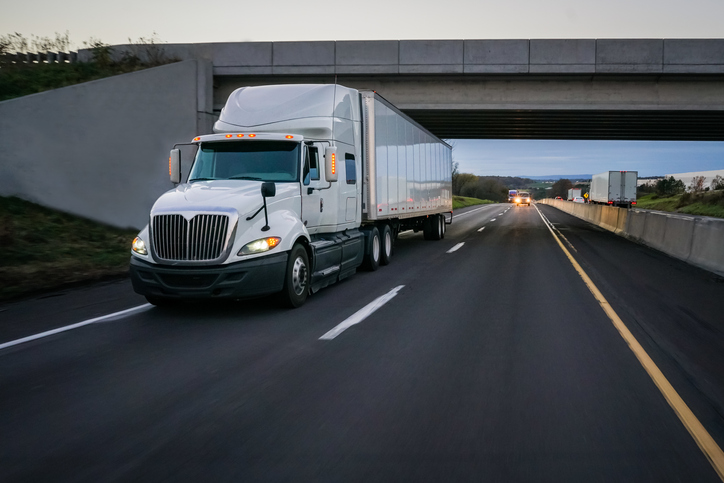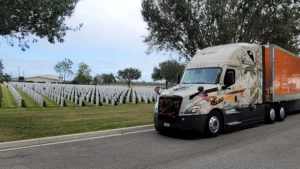ATLANTA — Data released today (Tuesday, March 24) by the American Transportation Research Institute (ATRI) shows that the nation’s trucks are continuing to move — in many cases faster than usual — to respond to the demands placed on the industry by the COVID-19 pandemic.
“ATRI’s real-time GPS data comes from more than a million trucks, allowing us to analyze freight flows. So far in March, what we are seeing is an unprecedented level of truck movement,” said Rebecca Brewster, ATRI’s president and COO. “Not only are trucks continuing to move, but they are doing so at speeds well in excess of normal traffic patterns.”
For example, according to ATRI’s data, at the intersection of interstates 85 and 285 in Atlanta, known locally as “Spaghetti Junction,” afternoon rush hour truck speeds are typically less than 15 mph due to congestion. Last week truck speeds averaged 53 mph.
“Spaghetti Junction is typical of what we’ve seen across the country, especially in areas hit hard by the virus and subject to quarantines and lockdowns,” Brewster said. “As other traffic dissipates, trucks continue to move, delivering much-needed relief supplies to markets, hospitals, gas stations and other essential businesses.”
Among the hardest-hit states — New York, California and Illinois — the data shows similar changes.
In New York, along Interstate 495 in Queens, the afternoon rush hour typically sees average truck speeds of 16 mph. Speeds have now more than doubled, averaging 38 mph, still below the posted speed limit but certainly an improvement.
In Los Angeles, at the intersection of interstates 710 and 105, truck traffic speeds during highly congested morning rush hours between 6 and 8 a.m. are normally less than 25 mph. Truck speeds are now averaging 53 mph as Californians stay home but truck deliveries increase.
At the Byrne Interchange in Chicago, where Interstate 290 intersects with interstates 90 and 94, morning truck speeds are now averaging 43 mph, more than twice the typical morning rush-hour speed of 20 mph.
According to ATRI’s analysis, these changes can be explained by several COVID-19-related factors. First is the dramatic reduction in commuter traffic, allowing trucks to operate at higher speeds, traditionally during traditional rush hours. Second is the continuous 24/7 truck operations that generate higher average truck speeds across nearly all hours of the day.
ATRI’s analysis used truck GPS data from more than a million heavy-duty trucks, and the locations examined included some of the nation’s top truck-choke points.
“Normally, ATRI’s bottleneck data is used to show us where the problems are on our highway system,” said Chris Spear, president and CEO of American Trucking Associations (ATA). “But during this period of extreme uncertainty, the data is showing us where the solution is — in the back of America’s trucks as professional drivers continue to quickly and safely deliver life-sustaining medical supplies, food, fuel and other essentials to Americans when they need it most.”
The Trucker News Staff produces engaging content for not only TheTrucker.com, but also The Trucker Newspaper, which has been serving the trucking industry for more than 30 years. With a focus on drivers, the Trucker News Staff aims to provide relevant, objective content pertaining to the trucking segment of the transportation industry. The Trucker News Staff is based in Little Rock, Arkansas.















